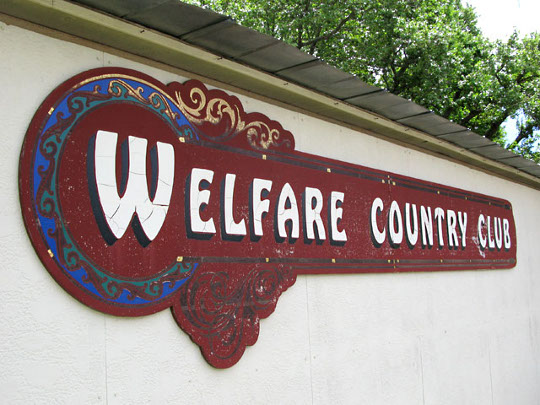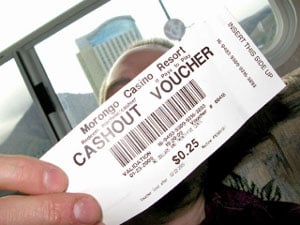Many people have the wrong idea about what full-time RVing costs. If you travel in anything but a hippie bus or beat-up old Winnebago, the unacquainted assume that you’re well-off, won the lotto or dealing drugs. But for most experienced full-timers that I know, we’re all just regular people of average means who find that living on the road doesn’t cost any more than living in a sticks and bricks.

Welfare, Texas.
When you’re new to full-timing it’s easy to make the mistake of treating the lifestyle like a permanent vacation. I know we did. We spent quite a bit of money to tour many bucket list places in those first few months on the road.
For example, during our first year on the road in 2007 when we thought this lifestyle was temporary, we spent $4,641 on campground fees! By 2009, that figure was just $3,075 and by 2011, it fell to $922! We cut back on camping costs because the longer we stayed on the road, the more we learned how to save on camping fees by boondocking and joining Passport America to get half-off RV park rates.

Playing the tourist.
We quickly discovered that full-timing is like a never-ending holiday – there’s an immeasurable level of happiness you can enjoy when you’re free to roam where you please.
But it didn’t take long for us to look at our expenses and pull our heads out of the clouds. We knew that if we didn’t watch that entertainment or fuel budget, we would be back in a stick house sooner than we imagined. It’s been eight years, so I can safely say we succeeded at coming down to reality.
If you haven’t hit the road yet and you run away from the B-word (budget), now is the time to buckle down and learn how to assess your finances to find out what you can and can’t afford on the road. We learned how to do this through Dave Ramsey‘s debt-free teachings.
What we discovered about full-time RVing expenses:
- Your cost of living isn’t too much different than when you live in a stick house. The three categories that rarely change are food, fuel and rent.
- Where you spend money just shifts to different categories, inflating some and decreasing others at certain times of the year. For example, if you commute to work now, you have a steady fuel bill that you pay for each week. But once you hit the road, some weeks you’ll hardly drive any miles and this can almost eliminate your fuel costs for that month.
- When we fly south for winter, we can expect at least $1000 in fuel costs during that first month on the road. So that expenses category goes up exponentially, but at the same time our food and beverage costs go down because we just don’t have RV storage space to keep the Costco-sized packages that we enjoy at our summer cabin.

Casino camping bargains.
After eight years of living this lifestyle and following a full-time RVIng budget template I created, I know how to estimate what our expenses will be and when they’ll go up or down. And just like a stick-house lifestyle, there will be ugly financial emergencies that must be attended to.
Because Murphy’s Law always happens when you least expect it, we work hard to keep an emergency fund with at least six months of living expenses. Since we refuse to get back into credit card debt ever again, this emergency fund is how I sleep at night. I encourage you to start one and maintain it if you want to make the most of this permanent vacation lifestyle.

Im disabled…back n neck….thinking about selling house n live in rv till my daze r over….cant take care of house n kidds…..dont care….is t feaseable…im on ssd …after medacare i get 1819 a month…house pymt 674. Have cc dept…is it even doable….danowen56.dc@gmail.com…..please ive read sum articles but not any with my situation